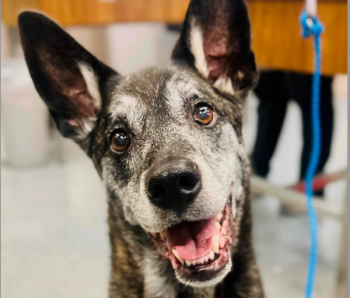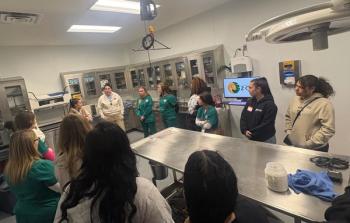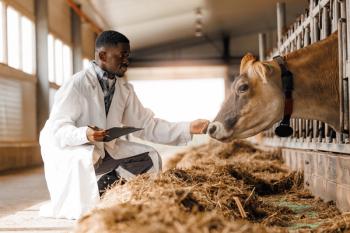
Lean state budgets starve veterinary colleges
Nashville, Tenn.- As the University of Tennessee's (UT) veterinary college and hospital reopens following a historic three-day government shutdown, DVM educators say the state legislature's impasse on a budget not only is to blame for the closure, but also signifies an economic crunch of national proportions.
Nashville, Tenn.- As the University of Tennessee's (UT) veterinary college and hospital reopens following a historic three-day government shutdown, DVM educators say the state legislature's impasse on a budget not only is to blame for the closure, but also signifies an economic crunch of national proportions.
The clues: A second bad year for the economy has left states' revenues lean, forcing lawmakers to trim funds earmarked for higher education. For public institutions relying heavily on state dollars, the cuts are devastating. Private colleges primarily financed through tuition and philanthropy are, for most part, impervious to these financial fallouts.
Yet each of the country's 27 accredited veterinary colleges feels burdened by this recession. Some answer by freezing employee wages and disconnecting administrative long distance lines. For others, the cutbacks are more drastic.
Veterinary college deans are left with two choices, says Dr. Lawrence Heider, the newly hired executive director of the American Association of Veterinary Medical Colleges (AAVMC).
"They can raise tuition or they can look for other revenue sources to survive," he says. "Most, I suspect, will want to do both."
Dr. Michael Blackwell
The political upshot
Survival has been the agenda of UT Dean Dr. Michael Blackwell since June 30, when Tennessee lawmakers failed to meet a midnight budgetary deadline due to debates on whether to implement a state income tax. Tennessee traditionally relies on tax dollars garnered solely through the sale of goods and services, which have slowed in the recession.
"The two camps dug in and came to a head, neither side willing to pass a budget by July 1, and the state doesn't have any money to operate without one," says Blackwell. "This is the first time a university of this size was shut down for sure."
Far-reaching effects
In the meantime, UT, like most other institutions, has financial issues of its own. While Blackwell has yet to quantify the shutdown's impact, he knows the college's teaching hospital, a huge revenue generator already suffering from a thin patient load, was forced to turn away dozens of clients and cancel appointments.
"We've still made money this year even though our caseload was down because we adjusted fees by 15 percent in a lot of areas," he says. "With less clients, it was the only way we could manage to stay afloat."
Leaving the nest
Hanging onto financial health essentially means weaning the college from state dependence, which provides 57 percent of the university's income at $13 million a year, Blackwell says. UT officials are working to identify fresh revenue sources and snag federal dollars provided by two of the country's main granting agencies: the United States Department of Agriculture (USDA) and the National Institute of Health (NIH).
Dr. Ed Mahaffey
USDA provides millions for veterinary research a year, and according to Blackwell, the national bioterrorism threat has left NIH - an agency prone to award grants for research in human medicine - receptive to veterinary endeavors.
"From what I'm hearing, NIH has shifted its posture regarding antimicrobial issues in light of a bioterrorism focus," Blackwell says. "They understand that the overlap of veterinary and human medicine is tremendous.
"Now is the time for veterinary colleges to put plans before NIH and receive some of that money."
Grappling for grants
NIH records reveal plenty of room for growth in the veterinary sector. In 2000, DVM studies received less than 1 percent of awards to higher education, with medical institutes garnering nearly 51 percent of NIH funds. The following year, UT ranked sixteenth among veterinary college recipients at $1.6 million. The University of California, Davis School of Veterinary Medicine topped the chart, receiving $24.5 million.
NIH spokesman Bob Moore refuses to verify trend rumors but admits the agency has become increasingly focused on bioterrorism and defense.
Tuition climbs in veterinary education
"Even in this economy, NIH is almost politically immune; we have more dollars to give because nobody can be against health research," he says. "Still, that doesn't mean veterinary colleges will receive more money. We award funds based on applications.
"If all the best applications came in from the Alaska School of Veterinary Medicine, they would get all the money. But in reality, that's not going to happen."
Falling on students
Besides, federal grants also can't relieve the burden, says Jeff Douglas, spokesman for Virginia Tech's veterinary college. "We're not seeing any state financial growth for vet schools in the face of new threats of terrorism," he says.
In fact, Virginia Tech's program has been financially eroded during the last two years as state lawmakers realize a $4 billion deficit. Virginia Tech, in turn, sliced $56 million from its biannual budget as it sinks into financial emergency. Tuition increases are the most viable answer, Douglas says, adding the college raised 2002-2003 rates by 9 percent.
"The economy is bad," Douglas says. "I think every college will have to increase tuition."
The University of Georgia's situation is less severe, says Dr. Ed Mahaffey, the veterinary college's associate dean for services. Last year, the university absorbed state funding reductions of 2.5 percent. Since then, it's raised tuition by 10 percent.
"This year we will have to absorb an additional 3.5 percent funding reduction," Mahaffey says. "At this point we are still able to manage budgetary restrictions and cut back without trimming muscle, but after this year, I don't think we can cut any more without jeopardizing our programs.
"To me, the situation is obvious. From what I'm hearing, all of our veterinary colleges are at risk.
Newsletter
From exam room tips to practice management insights, get trusted veterinary news delivered straight to your inbox—subscribe to dvm360.






